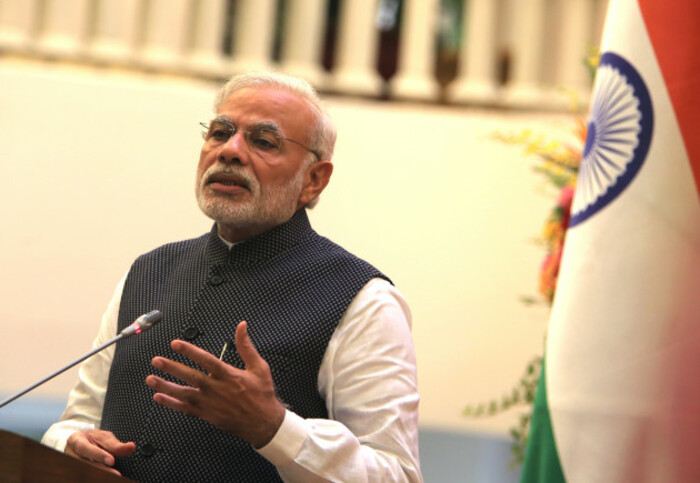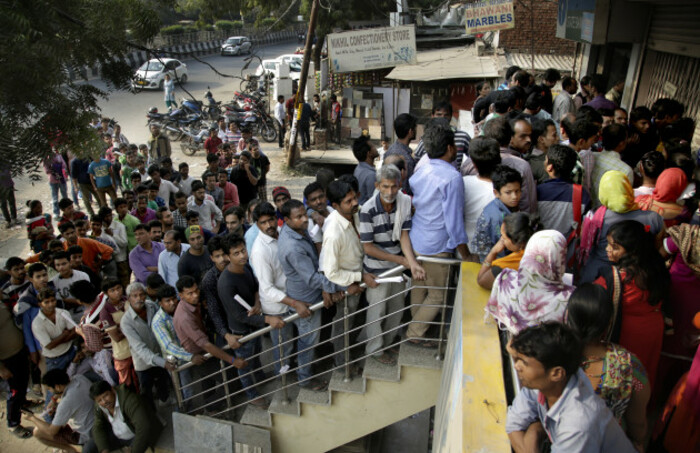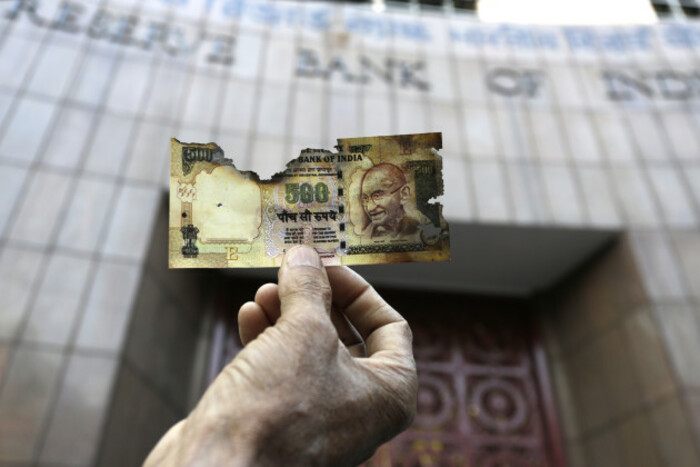Your crash course in... Why a crackdown on 'black money' has left Indians queuing for cash
A ban on 500 and 1,000 rupee notes has rocked the economy – but it might only be a short-term sting.
INDIA’S PREMIER DROPPED a bombshell a few weeks ago when he announced an overnight ban on 500 and 1,000 rupee notes.
In an address to the nation, prime minister Narendra Modi said culling the country’s largest denomination notes – which are worth the equivalent of about €7 and €14 respectively - would “strengthen the hands of the common man in the fight against corruption”.
The invalid currency will be swapped for new Rs500 and Rs2,000 notes with a limit on how many old notes can be deposited and exchanged.
Criminals with wads of ill-gotten and counterfeit cash are the target of the ban, but regular citizens have also felt the pain – which is actually part of the government’s plan.
With that in mind, let’s look at why India has dumped the bulk of its cash in a bid to clamp down on corruption – and ‘black money’.
Corruption
When Modi announced that Rs500 and Rs1,000 notes were invalid from 8 November, he said the bulk of India’s cash was tainted by criminal activity.
“The magnitude of cash in circulation is directly linked to the level of corruption,” he said.
“Inflation becomes worse through the deployment of cash earned in corrupt ways. The poor have to bear the brunt of this. It has a direct effect on the purchasing power of the poor and the middle class.”
 Indian prime minister Narendra Modi
Indian prime minister Narendra Modi
The old notes are easy to counterfeit, he said, and widely used to buy weapons by criminal groups.
They were also “stashed under the beds of government officers”, he said, and used by land buyers to bribe housing officials.
A ban on the commonly used notes would have a major impact on illegal activity, Modi promised.
“The Rs500 and Rs1,000 notes hoarded by anti-national and anti-social elements will become just worthless pieces of paper.”
Ordinary citizens
However, it is not just India’s criminals that like to deal in cash. The country has a largely cash economy with an overwhelming majority of transactions being completed through physical tender.
Law-abiding citizens were bound to get caught in the crossfire, but Modi reckoned they wouldn’t mind.
“Experience tells us that ordinary citizens are always ready to make sacrifices and face difficulties for the benefit of the nation,” he said. “I have full confidence that every citizen will stand up and participate.”
 Bank queues in India
Bank queues in India
People have been given until 30 December to exchange invalid notes for the new ones or to deposit leftover cash into their bank accounts.
However, there is a daily Rs2,000 (€27.50) cap on ATM withdrawals, while only Rs4,000 (€55) can be exchanged at banks. There is a Rs250,000 (€3,550) limit on the amount of money that can be lodged to an account.
Farmers with crop loans and families with upcoming weddings – which are big in India – were given larger withdrawal limits of Rs25,000 (€345) and Rs250,000 per week respectively.
‘Day of rage’
Unsurprisingly, demonetisation has put an enormous strain on the country’s banking system.
News outlets published images of huge queues of people anxious to exchange their worthless cash for new currency and there was chaos across the country with some banks running out of the new notes.
There were also reports of people becoming ill from exhaustion after standing in line for hours.
India’s opposition parties accused the government of mismanaging the situation and invited frustrated citizens to protest in a “day of rage”.

Thousands took to the streets across various cities this week, but the BBC questioned whether there was a genuine groundswell of opposition to Modi’s ban.
The broadcaster’s Asian correspondents said despite the inconvenience – particularly for poorer citizens – the majority of Indian people are in favour of the rupee cull.
‘Black money’
As well as dismantling criminal activity, the ban promised to rid India of ‘black money’ stashed away by otherwise law-abiding citizens.
‘Black money’ is code for tax evasion, naturally a big problem in such a cash-centred economy.
According to official government figures, only 1% of Indians paid income tax in 2013 – in a nation of 1.3 billion people. The majority of revenue is currently collected indirectly through sales and VAT.
As well as the cap on how much cash can be withdrawn and exchanged at banks, the government warned that deposits above Rs250,000 will be investigated by tax authorities.
If a citizen is found to have evaded tax, they will be charged the full bill on top of a fine worth up to 200% of the tax owed.
Earlier this week, the finance minister relaxed this rule as part of a new scheme, according to a Reuters report. In a bid to encourage tax dodgers to come clean, they can now pay half their tax bill and put another quarter of it into a trust account for four years.
 India's finance minister Arun Jaitley
India's finance minister Arun Jaitley
How has it worked so far?
Unsurprisingly, Indian businesses have been badly hurt by the rupee ban.
Pundits have warned that the country – which recently overtook China as the world’s fastest-growing major economy – will see a major slowdown in its boom because of it.
CNN reported that the ban will take at least 1% off India’s current 7.1% GDP growth rate. One commentator told the American news outlet he wouldn’t be surprised if it lost 3% by the end of the current financial year.
That said, Modi was elected with a mandate to eliminate widespread tax evasion, and a wider tax base would allow for more spending in public services which would stimulate the economy.
Some economists have questioned the decision to introduce the Rs2,000 note – arguing that the larger denomination note would surely make it easier for illegal transactions.
After a long silence, the Reserve Bank of India’s chairman Urijit Patel said the new currency “has been designed to make it hard to counterfeit” because they are smaller and thicker.
The downside of the new shape, however, is that it doesn’t fit ATMs. The machines have to be reconfigured to cater for the new notes which has added to the backlog. It wouldn’t be surprising if the 30 December deadline was extended as a result.
Time will tell whether Modi’s gamble was worth it. But if the policy manages to fatten up the country’s tax-to-GDP ratio, a measure of tax raised against economic output, from 17% to the OECD average of 34%, the short-term sting could propel India’s economic boom even further.






